Indicator 4.1.1

Proportion of children and young people (a) in grades 2/3; (b) at the end of primary; and (c) at the end of lower secondary achieving at least a minimum proficiency level in (i) reading and (ii) mathematics, by sex
The Content Alignment Tool (CAT) is a questionnaire designed to assess the alignment of national assessment programmes to the Global Content Framework (reference point) since national assessment programmes do not necessarily cover all contents in the Global Content Framework.
The tool is for both domains covered by the indicator, reading and mathematics, and includes a scoring scheme for minimum alignment.
| PDF document | Online platform |
 |
 |
Robust, consistent operations and procedures are an essential part of any large-scale assessment, to maximise data quality and minimise the impact of procedural variation on results.
Procedural alignment across assessments is important to set the minimum procedures so data integrity is protected, and results are robust and reasonably comparable for any given country over time, but also across countries at any given point in time.
The Procedural Alignment Tool is a questionnaire designed to help countries self-assess their learning assessment data collection and learning assessment implementation practices to good practices to ensure reported data for indicator 4.1.1 have an acceptable level of quality.
| PDF document | Online platform |
 |
 |
 The Manual of Good Practices in Learning Assessment is a set of good practices identified to guide the implementation of an assessment based on existing literature and documents.
The Manual of Good Practices in Learning Assessment is a set of good practices identified to guide the implementation of an assessment based on existing literature and documents.
Quick Guides provide countries with an abridged and handy tool for the implementation of assessments and cover broader guidance on key issues such as Why carry out a learning assessment? How to implement a learning assessment?
 |
 |
| Making the Case for Learning Assessment | Implementing a National Learning Assessment |
The Minimum Proficiency Levels define a minimum global proficiency level for each point of measurement and domain for international assessments, based on the Global Content Framework (GCF). The minimum proficiency levels at the global scale have been mapped to these assessment programmes:This was possible through an analysis by experts to accommodate countries with different socio- and economic-development stages at each of the 3 educational levels included in indicator 4.1.1 .
 Minimum Proficiency Levels at the global scale have been mapped to assessment programmes from around the world.
Minimum Proficiency Levels at the global scale have been mapped to assessment programmes from around the world.
The Global Proficiency Framework for (also referred to as the GPF or the framework) defines the global minimum proficiency levels that learners are expected to demonstrate at the end of each grade level, from grades 1 to 9. The GPF was developed by educators, curriculum experts, and psychometricians with extensive experience developing and implementing programs in a wide range of countries and contexts. GPF were developed for both reading and mathematics.
| Reading | Mathematics |
 |
 |
| Access tables in Excel | Access tables in Excel |
- Consensus building meeting (forthcoming)
The Protocol for Reporting explains the flow of work, the activities and phases involved in the reporting of Indicator 4.1.1 and the tools and reference documents publicly offered to generate a minimum level of consistency of education systems, while retaining sufficient flexibility for education systems to pursue assessment programs appropriate to their context and needs.
The Interim Reporting Strategy promotes the highest level of participation and reporting by prioritising a fit-for-purpose approach, where all assessment programmes are accepted, regardless of whether they meet minimum criteria, and proceed with the reporting while being cautious to specify when they do not.
- Framework for Interim reporting (presentation)
- Framework for Interim Reporting
Linking Strategies
 Options to link assessments together have been explored to address the challenges posed by the limited capacity of some countries to implement cross-national, regional, and national assessments.
Options to link assessments together have been explored to address the challenges posed by the limited capacity of some countries to implement cross-national, regional, and national assessments.
The Rosetta Stone is a subject-based psychometric linking approach (new data collection by administrating the same tests to students).
COVID-19: Monitoring Impacts on Learning Outcomes (MILO)
The COVID-19: Monitoring the Impacts on Learning Outcomes (MILO) project aims to measure learning outcomes in six countries in Africa, in order to analyse the long-term impact of COVID-19 on learning and to evaluate the effectiveness of distance learning mechanisms utilised during school closures. In addition, this project will develop the capacity of countries to monitor learning after the crisis.
The 4 overarching goals of the project are to:
- Evaluate the impact of COVID-19 on learning outcomes and measure the learning loss by reporting against SDG indicator 4.1.1b
- Identify the impact of different distance learning mechanisms put in place to remediate the learning disruption generated by COVID-19
- Expand the UIS bank of items for primary education
- Generate a toolkit so that assessment results can be scaled to international benchmarks, reporting against SDG 4.1.1.b.
Presentation (PPT) (Forthcoming)
The Policy linking methodology consists on setting benchmarks, or cut scores, on learning assignments to align them with other assessments across countries or contexts (alignment of assessments with existing data).
- Linking Approaches: Working Paper for Endorsement, Gustafsson (GAML5/4.1.1/3, 2018)

- Exploring the commonalities and differences between Regional and International Assessments by Trevino and Ordenes (2017)
- Mind the Gap: Proposal for a Standardised Measure for SDG 4-Education 2030 Agenda by Altinook (2017)
- Pandemic-related disruptions to schooling and impacts on learning proficiency indicators: A focus on the early grades (March 2021)
- Tool for projecting the attainment of SDG 4.1.1 (Excel), intended to produce sufficiently reliable scenarios for world regions, and the world.
- Assessing Learning Proficiency Levels and Trends for Sustainable Development Goal 4.1: A focus on Africa (November 2021)









